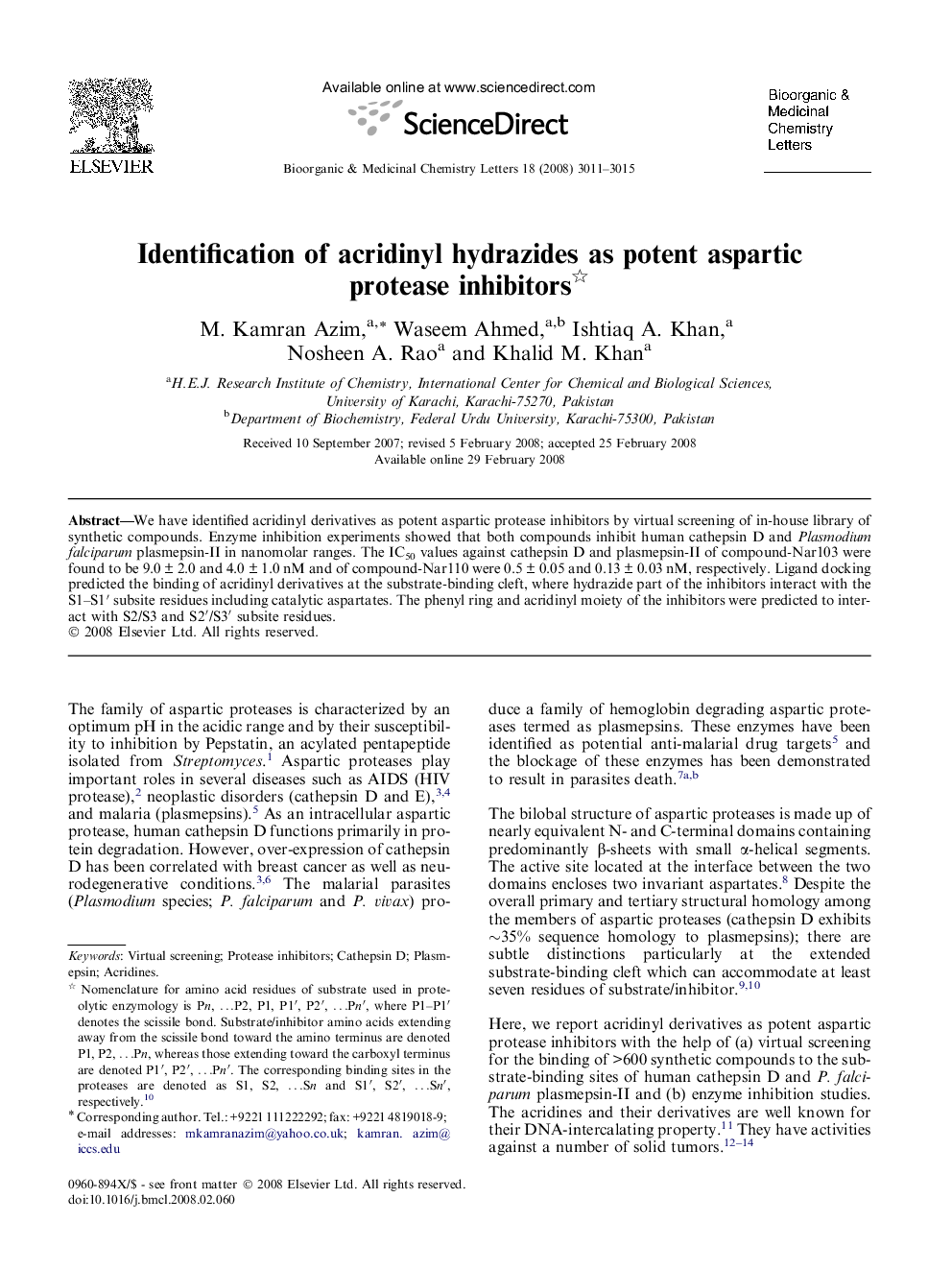| Article ID | Journal | Published Year | Pages | File Type |
|---|---|---|---|---|
| 1376585 | Bioorganic & Medicinal Chemistry Letters | 2008 | 5 Pages |
We have identified acridinyl derivatives as potent aspartic protease inhibitors by virtual screening of in-house library of synthetic compounds. Enzyme inhibition experiments showed that both compounds inhibit human cathepsin D and Plasmodium falciparum plasmepsin-II in nanomolar ranges. The IC50 values against cathepsin D and plasmepsin-II of compound-Nar103 were found to be 9.0 ± 2.0 and 4.0 ± 1.0 nM and of compound-Nar110 were 0.5 ± 0.05 and 0.13 ± 0.03 nM, respectively. Ligand docking predicted the binding of acridinyl derivatives at the substrate-binding cleft, where hydrazide part of the inhibitors interact with the S1–S1′ subsite residues including catalytic aspartates. The phenyl ring and acridinyl moiety of the inhibitors were predicted to interact with S2/S3 and S2′/S3′ subsite residues.
Graphical abstractDocking of acridinyl hydrazides in the substrate-binding cleft of plasmepsin-II from Plasmodium falciparum.Figure optionsDownload full-size imageDownload as PowerPoint slide
